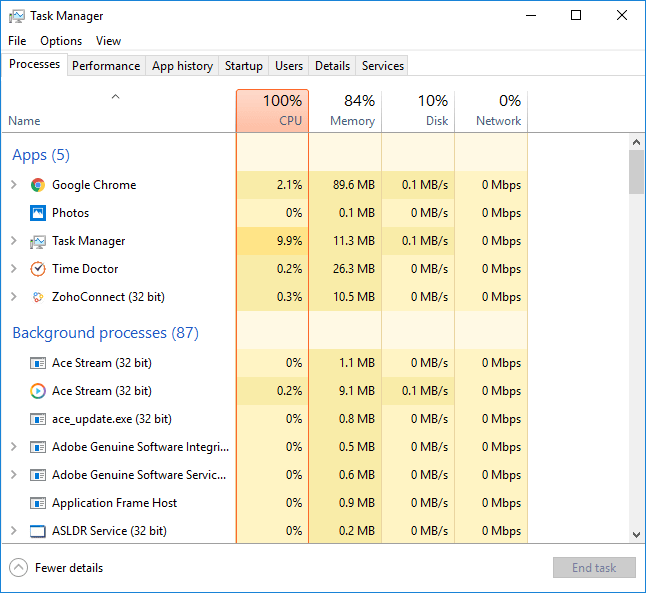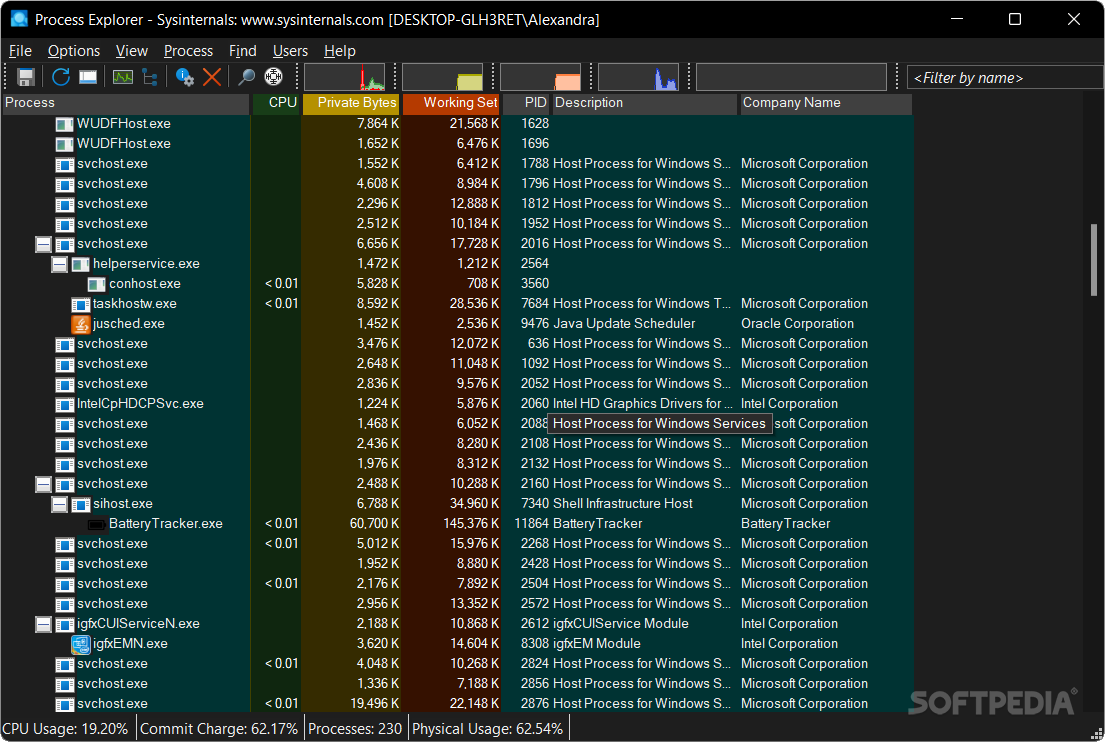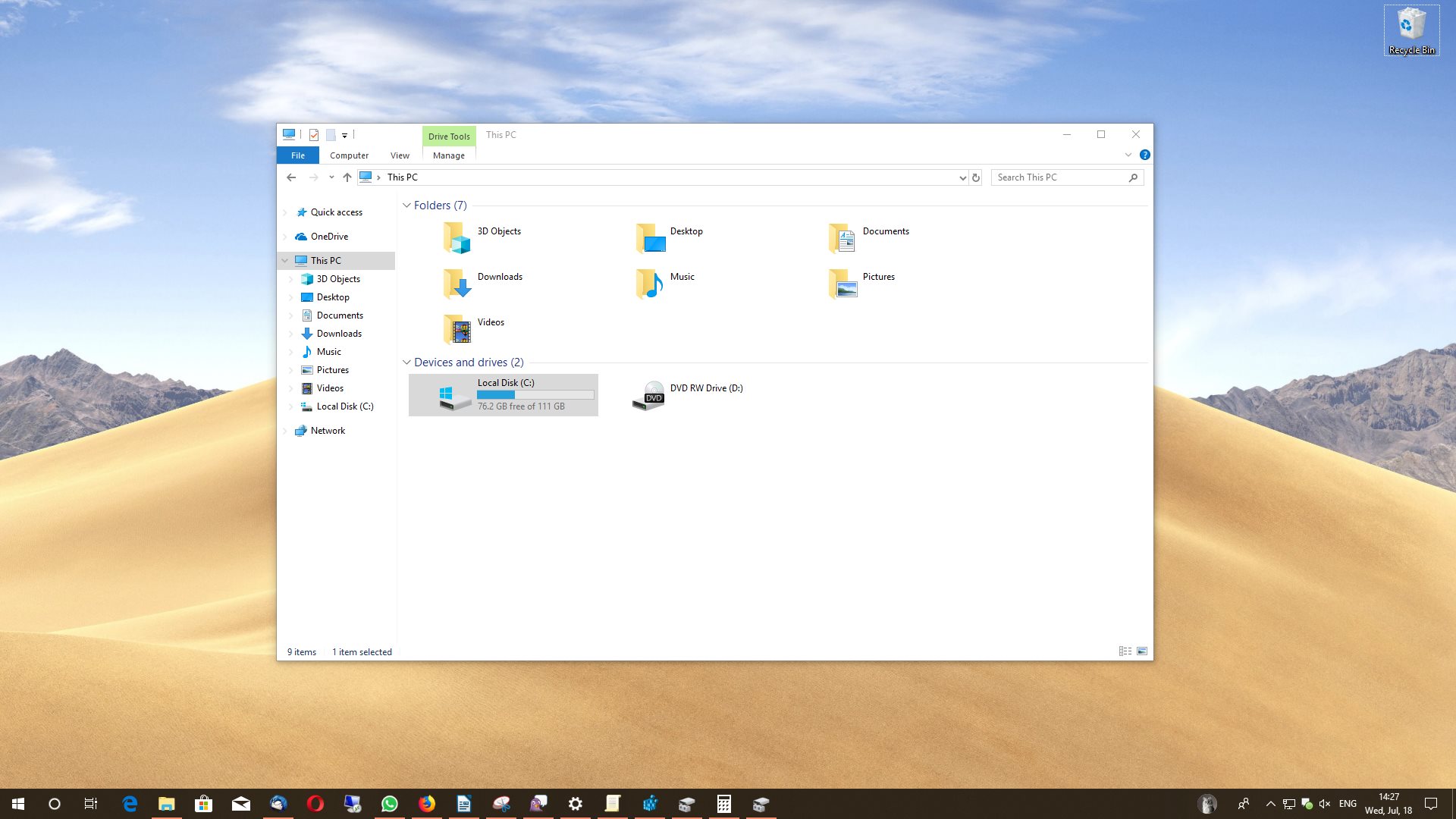

- Process explorer disk usage install#
- Process explorer disk usage full#
- Process explorer disk usage pro#
- Process explorer disk usage software#
Process explorer disk usage full#
Buffer gets full, buffer needs to empty (which it was already doing) by writing the file to the SSD's storage, that is why Disk Usage is full and download stopped. You slowed down your disk, and now it keeps up with it's internal actual writing speed. It made your SSD slower by default, making it appear as if the Usage and download are now normal, but they aren't. No, disabling Windows's Write Caching didn't fix it. To identify whats causing too much disk usage in Windows 10/11. it says things I didn't know.Īnd it also makes it clear why your download slows down all of the sudden while disk usage is full. There are several potential causes for high disk usage shown in your Task Manager. I am also not sure why this bug is so selective. It makes little sense that writing to its buffer is slower for you. Never mind that modern systems are so fast currently, that it shouldn't even matter too much anymore. Its supposed to write files to the buffer on the device, and then slowly put them into the storage part of the SSD, allowing you to much more quickly access the file. SFC /scannow DISM /Online /Cleanup-Image /CheckHealth DISM /Online /Cleanup-Image /ScanHealth DISM /Online /Cleanup-Image /RestoreHealth Quick note: While the command is running, it's expected to see the process stuck at 20 or 40 percent. Type each command below and wait until scan is completed. You're the second person to reportthat Write Caching slowed down the system, rather than speeding it up. Open command prompt with administrator access 2. Just turn off Enable Windows write caching. In the right-hand side pane, double-click Turn off Windows Defender anti-virus.Ī Properties window opens, choose Enabled and click Apply and OK to save the change, then close all the windows.Originally posted by Tora:Problem sloved.

Scroll down the left-hand side tree structure until you get to Computer Configuration. Open it and go to Administrative Templates, then Windows Components. Look for Windows Defender anti-virus.
Process explorer disk usage install#
There are ways to install it on Home editions, but this article does not cover them.) However, it has been identified as a potential cause of disk performance issues in Windows 8 and later versions of Windows, including Windows 10. connections by process, network traffic, disk and I/O utilization.


Process explorer disk usage pro#
(This is only available on Pro and Enterprise editions. Fix 1: Disable SuperFetch SuperFetch helps to decrease boot time and make must-load programs more efficiently. Task Manager DeLuxe (TMX) is based on MiTeC System Information Component Suite and. This can be either free or paid, but ensure you have something that is installed in Windows Defenders place. If you disable Windows Defender, ensure you have another Anti-malware application to install in its place.
Process explorer disk usage software#
Note: Your computers protection suffers without any anti-virus software installed. It also scans your computer for known worms, harmful software, viruses, and other such programs. MsMpEng.exe - Its role is to scan files for spyware, and quarantine or remove them if they are suspicious. Method I: Ensure that no other Adware, Anti-malware, or anti-virus software is installed or not fully removed From the main Process Monitor window, you can launch a view that’s similar to the Process Explorer app. If not, then choose the Procmon.exe file. If you’re running a 64-bit Windows system, choose the file named Procmon64.exe. When that is happening, it should be restricted/disabled to bring it back to normal use. After you extract the Process Monitor files you’ll see different files to launch the utility. The Windows Defender scan is getting stuck on a few files while checking malware. This issue with MsMpEng.exe taking 100% of the hard drive and CPU usually occurs when Windows Defender is scanning the computer for malware.Windows Defender comes pre-installed on Windows 11 and Windows 10 but is an optional download on older Operating Systems like Windows 7 and 8.MsMpEng.exe is the core process of the Windows Defender Anti-malware Application.The following sections are the methods that Microsoft recommends to stop the MxMpEng.exe file from causing high hard drive and CPU usage on your computer.


 0 kommentar(er)
0 kommentar(er)
